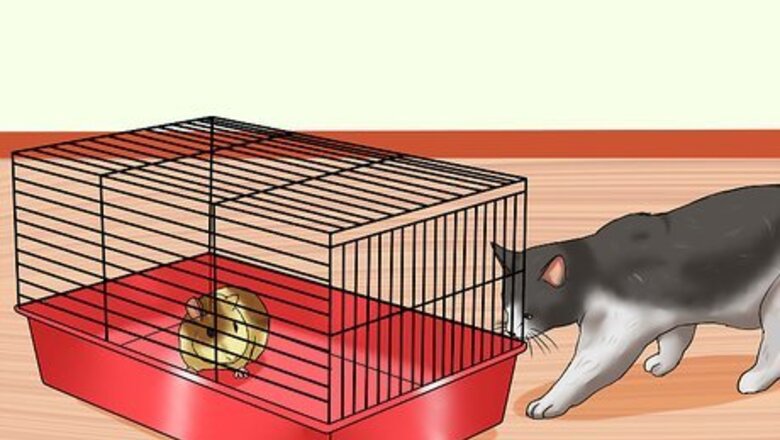
views
Maintaining a Safe Place for Your Guinea Pig
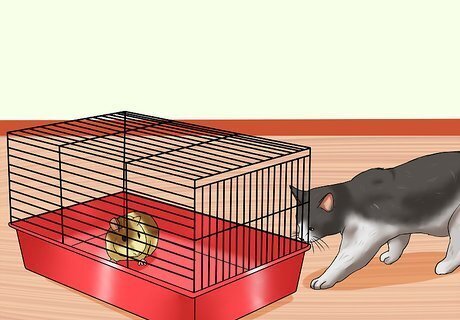
House your guinea pigs in a solid enclosure. When a cat enters kill mode, a flimsy cage won't stop it. While there are steps to follow that will reduce the likelihood of your cat becoming unnecessarily aggressive, it is still worthwhile to have a cage for your guinea pigs that guarantees their safety from demise by tooth and claw. Recognize that your cat is also capable of seriously harming your guinea pig without intending to do so. As such, your guinea pig needs an area where they are completely safe, even if only from some overzealous rough-housing.
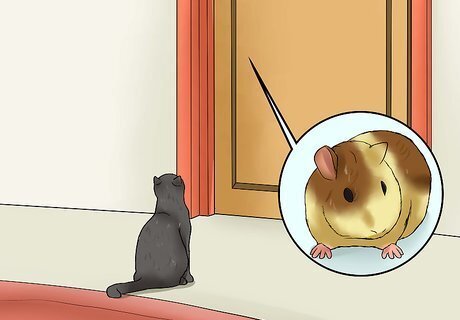
Establish specific areas where each pet is allowed to be. If possible, you'll want to keep your guinea pigs in a safe room where your cats are not regularly allowed. If you do not have sufficient space to allow this arrangement, choose a location for the cage that will prevent your cats from hanging out on or around the guinea pig enclosure. Always keep all cat toys and guinea pig toys separated in your house. If you have a guinea pig area, keep all of their worldly possessions in that area, and do not store or allow any cat stuff in that area. Disallow your cat from sitting beside or resting on top of your guinea pig's enclosure at any time.
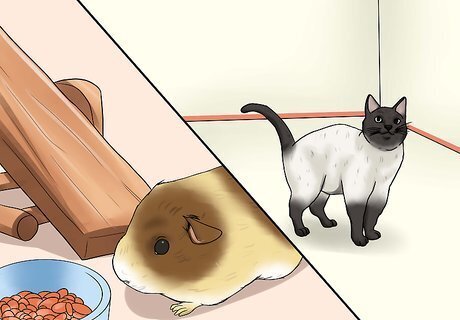
Allow both pets to become comfortable in their home environments independently. Especially if one arrives after you've already had the other for a while, allow the new arrival to acclimate to your home before introducing them to each other. They will already be able to smell one another's presence. Let the suspense build a bit. Wait at least a week before introducing a cat and a guinea pig. Technically, you just need to make sure they are not able to touch one another or make eye contact. To be safe, don't allow them to see one another at all.
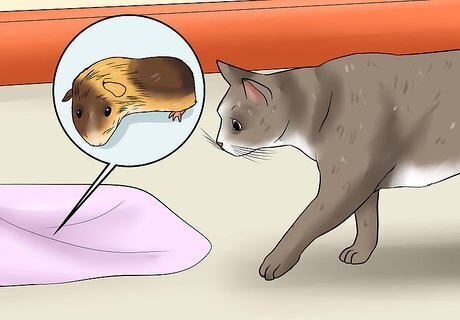
Emphasize the other pet's presence. Before actually introducing your pets, acclimate your cat to the guinea pig's scent. There are several ways to do this. The intent is to associate things your cat likes, such as food, with the guinea pig. This may seem counterintuitive, but the cat will not think of the guinea pig as food – instead, it will think the guinea pig smell indicates that other (and more appropriate) food is nearby. Place the cat's food just outside the door of the room in which your guinea pig lives. If your cat gets amped up outside the guinea pig's room, remove them. Do so in a jovial, relaxed manner – you don't want to indicate punishment, you just want to distract the cat from its overzealousness. Place a washcloth that you rubbed the guinea pig with near the cat's food bowl. Once your cat is entirely comfortable with the washcloth (no longer nervously or excitedly sniffing it from time to time), use the washcloth to stroke the cat as well. Use the same cloth to go back and forth between your pets, stroking each right after you stroked the other. As you do so, be relaxed and high spirited. Send the vibe to each pet that everything is awesome!
Introducing Your Pets
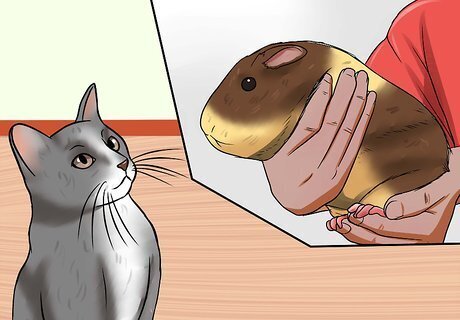
Introduce your cats and guinea pigs early. The younger they both are the better. If you get both your guinea pig and cat when they are each very young and allow them to grow up together, they are especially likely to become friends. Try to introduce your cat to your guinea pig before the cat is ten weeks old. Cats this young are undergoing the critical socialization period of their development and will be especially susceptible to information indicating that the guinea pig is a friend and fellow housemate.

Recognize that the peace process may not be without initial conflict. If you don't get your cat and guinea pig when they're both young, introducing them to each other may not go entirely smoothly. We're talking weeks of hardened stare-downs and weird, carnal noisemaking. Don't push either one of them. Trying to expedite the process will likely add stress to the situation and make it harder for them to calm down around one another.
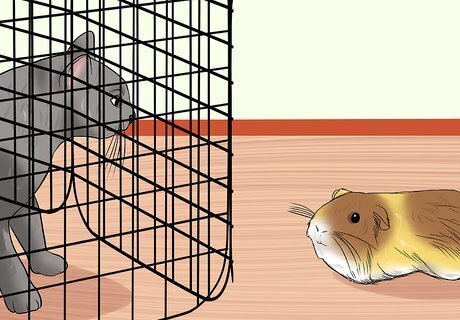
Start with a single, brief dose of eye contact. Once they've acclimated to one another's scent, allow quick eye contact sessions from a distance. These are the best way to handle visual introductions. Place the cat inside a kennel. Let the cat watch as you praise the guinea pig and feed the guinea pig treats for being calm and relaxed. The guinea pig will likely play its part because guinea pigs tend not to overthink things. Stop the eye contact session after a minute or two, or if either of the animals become overly energetic or nervous. The goal here is to instill calmness in their relationship.
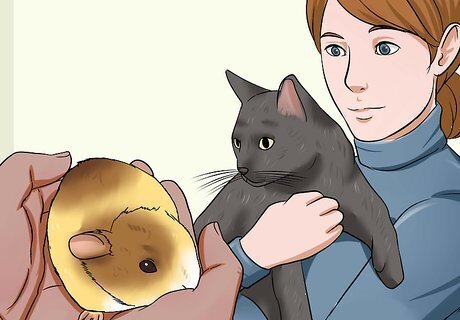
Turn the tables. On another early visit, bring the cat into the room where your guinea pig is kept (but never into the guinea pig's actual enclosure). Double-check that your guinea pig is secure in their housing area and that the cat cannot reach them. Bring the cat into the room, in your own or another human's arms. Whichever human you have assisted you should already have a good relationship with each pet. Hold one of your pets and have another human hold the other one. Each human should pet the animal they're holding. If each pet remains calm, allow them to watch as the other animal is treated fondly by the other human. Decrease the physical distance between them incrementally. Move closer by a foot each time you have a petting session.

Try some cross petting. Take a small amount of time each day to repeat this process. Talk to your guinea pig during these sessions so your cat becomes aware that they are a part of the family. Once the two humans holding the pets are close enough to touch the pet that the other human is holding, hold the distance. If you can sit next to one another with both animals remaining calm, you're at a good distance to start cross petting. Reach towards the other person and pet the animal that they're holding. Take turns petting the pet the other person is holding. This will show both the cat and the guinea pig that everyone is calm with everybody else. Reward calm, relaxed demeanors with treats and affection.
Letting Your Guinea Pig and Cat Get to Know Each Other
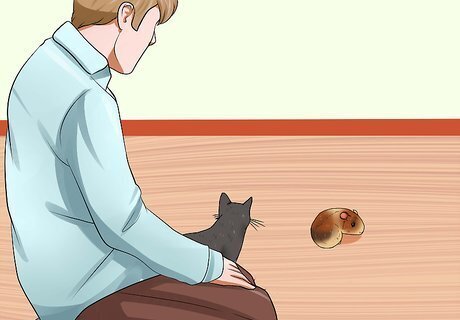
Let your guinea pig roam. Hold your cat on your lap in the room where you keep the guinea pig. Have the room to the door closed, and allow the guinea pig to roam around the room outside of its enclosure. Wait until the guinea pig approaches and assure the cat with affectionate petting if it remains calm. It they can noses one another and remain calm, they are likely ready for supervised playtime.
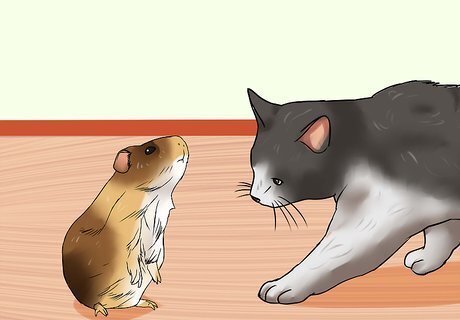
Allow the cat and guinea pig to get to know one another. The room with the guinea pig enclosure is best, as the guinea pig can return to its own space if it wants to do so. Always maintain active and vigilant supervision. Don't ever allow the cat to enter the guinea pig's enclosure. Interrupt your pets' interactions if the cat begins to stalk the guinea pig or either animal begins to get agitated or aggressive. Try again another day. If aggressive behavior continues, spend time holding the cat in your lap while the guinea pig roams.
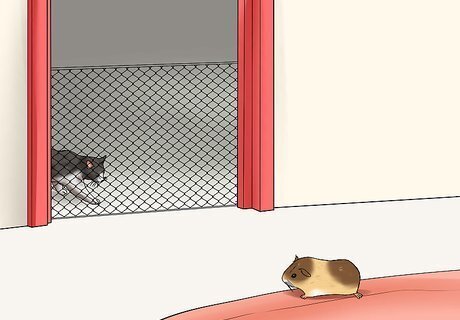
When you aren't in the house, keep the guinea pigs and cats separate. Make sure they are both in the respective zones where the other is never allowed. This will allow each to feel most comfortable while you're away, and minimize the risk of coming home to blood-speckled walls. Even if they become great friends, don't ever leave them alone together.















Comments
0 comment